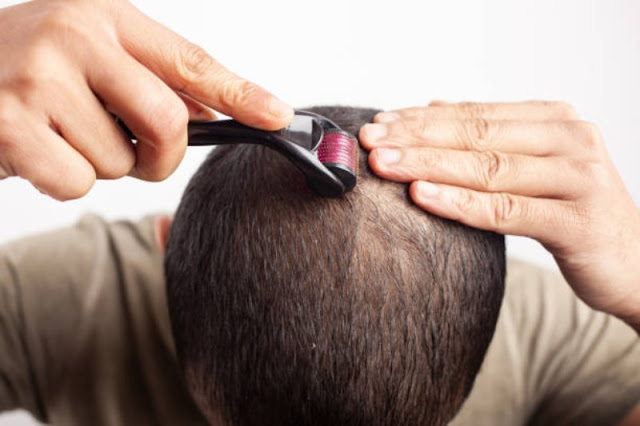Featured
- Get link
- X
- Other Apps
microneedling for hair loss

Introduction:
Hair loss, medically known as alopecia, is a common
condition that can significantly impact an individual's self-esteem and quality
of life. While various treatment options are available, microneedling has
emerged as an innovative and promising technique for stimulating hair regrowth.
This article provides a comprehensive overview of microneedling for hair loss,
discussing its principles, procedure, effectiveness, safety, and prospects.
Understanding Hair Loss:
Before delving into microneedling, it is crucial to
understand the underlying causes of hair loss. Common types of hair loss
include androgenetic alopecia (pattern baldness), alopecia areata
(autoimmune-related hair loss), and telogen effluvium (temporary shedding).
These conditions involve complex mechanisms that disrupt the normal hair growth
cycle and lead to hair thinning or loss.
Principles of Microneedling:
Microneedling, also known as collagen induction therapy, is
a minimally invasive procedure involving fine needles to create controlled
micro-injuries in the scalp. These micro-injuries stimulate the body's natural
wound-healing response, triggering the release of growth factors, cytokines,
and other signaling molecules that promote tissue regeneration and hair follicle
rejuvenation.
The Microneedling Procedure for Hair Loss:
a. Pre-treatment: The scalp is thoroughly cleansed, and a
topical anesthetic may be applied to minimize discomfort during the procedure.
b. Microneedling: A specialized device with fine needles is
gently rolled or stamped over the affected areas of the scalp. The depth of
needle penetration depends on the specific technique and the severity of hair
loss.
c. Post-treatment: After microneedling, the scalp may be
slightly red and sensitive. Topical treatments, such as serums or growth
factors, may enhance healing.
Effectiveness of Microneedling for Hair Loss:
a. Mechanisms of Action: Microneedling stimulates hair
regrowth through multiple mechanisms, including increased blood circulation to
the scalp, activation of dormant hair follicles, and upregulation of growth
factors involved in hair growth and tissue repair.
b. Research Studies: Several clinical studies have reported
positive outcomes with microneedling for hair loss, and these studies show
improvements in hair density, thickness, and overall hair regrowth.
Microneedling can be used as a standalone treatment or combined with other
therapies, such as topical minoxidil or platelet-rich plasma (PRP) therapy, to
enhance results.
c. Variations in Technique: The effectiveness of microneedling may vary depending on factors such as needle length, treatment frequency, and the presence of underlying conditions. Customizing the technique based on individual needs and combining it with complementary treatments may optimize outcomes.
Safety Considerations:
Microneedling for hair loss is generally considered safe
when performed by trained professionals. However, certain precautions should be
taken to minimize the risk of adverse effects. These include ensuring proper equipment
sterilization, using appropriate needle lengths to avoid excessive trauma, and
following post-treatment care instructions. Mild side effects, such as
temporary redness, swelling, or minor bleeding, may occur but typically resolve
within a few days.
Future Prospects:
Microneedling for hair loss represents a rapidly evolving
field, and ongoing research explores various aspects to optimize outcomes. This
includes refining the microneedling technique, investigating the use of growth
factors or stem cells in conjunction with microneedling, and exploring the
potential synergistic effects of combining microneedling with other emerging
therapies. Additionally, advances in microneedling device technology may lead
to improved precision and efficacy.
Conclusion:
Microneedling is a promising technique for stimulating hair
regrowth in individuals experiencing hair loss. Through its ability to activate
natural healing mechanisms and rejuvenate hair follicles, microneedling offers
a non-surgical, minimally invasive option for addressing hair loss concerns.
Further research, standardization of protocols, and long-term studies will
continue to refine the technique and expand its applications, bringing hope to
those seeking practical solutions for hair restoration.
- Get link
- X
- Other Apps

